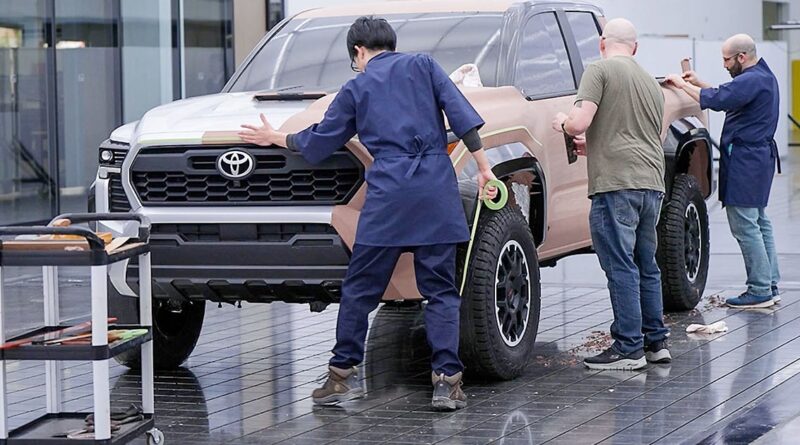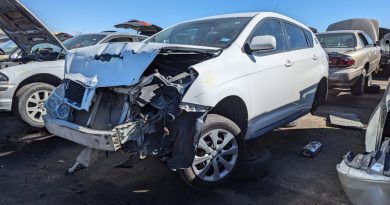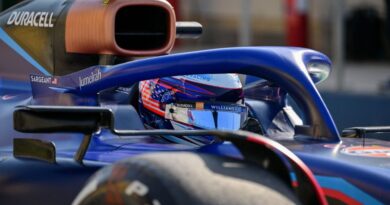Tacoma shares design DNA of Toyota’s ‘Four Brothers’ body-on-frame trucks
WAIMEA, Hawaii — As the global online reveal of the redesigned 2024 Toyota Tacoma wound down at a posh seaside tropical island resort here, after the fire dancers had departed the volcano-themed stage, Kevin Hunter sat alone, nearly unnoticed, in the driver’s seat of a white Tacoma with the door open.
For a few minutes, while journalists and guests just feet away largely ignored him, the president of Toyota Motor North America’s Calty design studio let his hands glide across the much improved interior contours of what is easily one of Toyota’s most important products.
His design teams in California and Michigan had been working on the Tacoma for more than three years, and this was an early opportunity to touch and feel what had previously existed only in a digital world. He wasn’t going to let the moment pass, especially given the scope of a project that not only affected Toyota’s third-bestselling nameplate in the United States, but its whole body-on-frame lineup.
The 2024 Tacoma, revealed here May 19, is the third of four Toyota trucks to move onto the automaker’s global F1 body-on-frame platform, following the Tundra full-size pickup in 2021 and Sequoia full-size SUV in 2022. But the Tacoma is the undisputed king of what Toyota calls its “Four Brothers,” outselling the two full-sizers and the Tacoma-based 4Runner SUV combined last year, and their sequential redesign onto a new platform — the redesigned 4Runner comes in 2024 — is a first.
“When we started working on Tundra, we knew Tacoma was coming. It was a great opportunity for us to sort of just reset everything,” Hunter told Automotive News. “We’ve really never been able to design the North American trucks in sequence like that with an all new platform together. So we thought, this is a great opportunity to look at our family identity — our North American truck DNA — and what we want it to be.”
When the Tacoma begins arriving at North American dealerships this year, it will share distinct styling cues and features with the larger Tundra, along with a four-cylinder-based version of the Tundra’s optional i-Force Max hybrid powertrain. The similarities are purposeful, Hunter said.
“Tundra set the tone for that in the shape language and in the taste. The kinds of forms that we’re using. We coined the term ‘interlocking shapes’ — interlocking symbolizes strength — and we wanted that to come across in the trucks,” he said, “so that when somebody looks at it, fundamentally it looks strong. It is strong and it looks strong. Everything we did was really from the point of view of its capability, which was going to be great.”
Toyota brand head David Christ said dealer input was instrumental in helping craft the redesigned Tacoma, through the product council of the Toyota National Dealers Advisory Council.
“Dealers have been very involved, and we have product counsel that we use to get feedback on our product decisions,” Christ said. “Those dealers … are not only great car dealers but also have a knowledge and a passion about product. So we included them in the process of developing and engineering the truck, and we think we hit on all of the asks for the segment.”
One of those asks from dealers and customers, Hunter said, was for a fundamental change in the cabin.
Hunter said in customer and dealer feedback from the third-generation Tacoma, “one of the key areas we looked at was the seating position; the hip-to-heel of that truck was … a little bit lacking. If you were a tall guy getting into that truck and using it, it presented a few challenges, so we really wanted to fix that problem and get a proper seating position.”
Hunter said designers raised the seating position, which required lifting the roofline slightly to give the Tacoma adequate headroom.
“Entry/egress should be easy on a truck,” Hunter said. “It shouldn’t be a laborious task to get in and out of your truck, so we really wanted to just make it very easy to use — convenient, simple.
“They weren’t looking for a new truck/car, or a new concept of a truck,” Hunter said of dealer asks in the design phase. “Instead, they said, ‘Give me a rugged truck; that’s what I need.’ So we really, really took that to heart.”
Hunter said the new Tacoma is a “pure play, utility off-road, rugged product,” derived from the previous generation, “but we had to modernize it so it felt like a new product.”
Because the Tacoma is exclusive to North America, Hunter said designers didn’t have to worry about limitations from other markets.
“Let’s look at who our customer is, and direct [the design] squarely at them,” he said, differentiating it from the Toyota Hilux, a compact pickup sold in the rest of the world. “You can’t get too rugged with the design of the Tacoma, so we really took that to heart. But the Hilux is a different truck in a different market, and it has different needs.”
Source : Autonews.com



